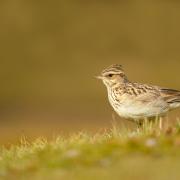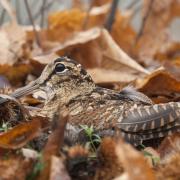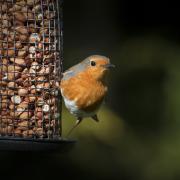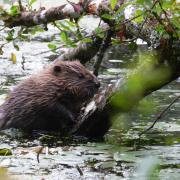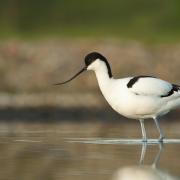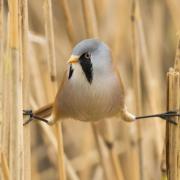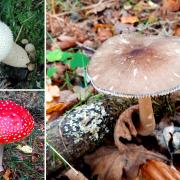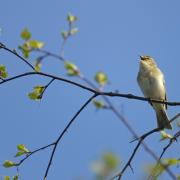Dorset’s heathland becomes a magical place at dusk with the churring chorus of a remarkable summer visitor, says Paul Morton of Birds of Poole Harbour
Dorset heathland is one of the most protected habitats in southern England. This special landscape is home to some very rare flora and fauna, and summer is a great time to see and hear some of its feathered residents. Keep your eyes on the skies for the aerial acrobatics of the sickle-winged hobby. On sunny days you may be lucky enough to see it perform seemingly impossible manoeuvres over heathland ponds as it catches dragonflies in mid-air with its talons. Listen for the melodic woodlark and tree pipit as they battle it out for vocal supremacy. And the once rare, but now ‘showy’ Dartford warbler is enough to satisfy any birding need. However the star billing of the summer heathland scene belongs to one very special and elusive bird – the nightjar.
This crepuscular creature ‘plays log’ by day, using its exquisite camouflage to blend in with the warm, dry heathland floor, lying motionless for hours until the darkness begins to fall. As dusk creeps up and all other birds go to roost, the nightjar begins to stir. With eyes flickering open and wings stretching, its shift begins.
Courtship and territory behaviour, carried out at dawn and dusk, involves the males vigorously chasing each other, flashing bright white wing patches to one another, stating claim on an area of heath but more importantly, a mate. After several minutes of fast aerial battles, in and out of small pine trees, interspersed with their frog-like calls, the males are ready to sing. If you’ve never heard nightjars sing then promise yourself that this summer you will go and hear their song. It is a truly spine-tingling experience that once heard you’ll never forget.
As darkness falls and the inky glow of night appears, the male nightjar will find a protruding tree branch to settle on and begin his ‘churring’ chorus. The eerie metallic sound rings out across the bell heather, changing in pitch every so often, and lasting for several minutes at a time. First one, then two, then four, then six males all calling at once, provide your very own stereo soundscape. Then, as quickly as it all began the ‘churring’ stops once darkness fully arrives. At this point the nightjars go and feed, often 5 -10km away, either up the river valley, over gardens and even over the odd garden centre!
The nightjar, which arrives on our shores from Africa in mid May to breed, is a most welcome summer visitor to Dorset’s heathlands. They will be gone by August so make this the summer that you are serenaded at dusk by a magnificent nightjar orchestra.
Find out more at birdsofpooleharbour.co.uk








